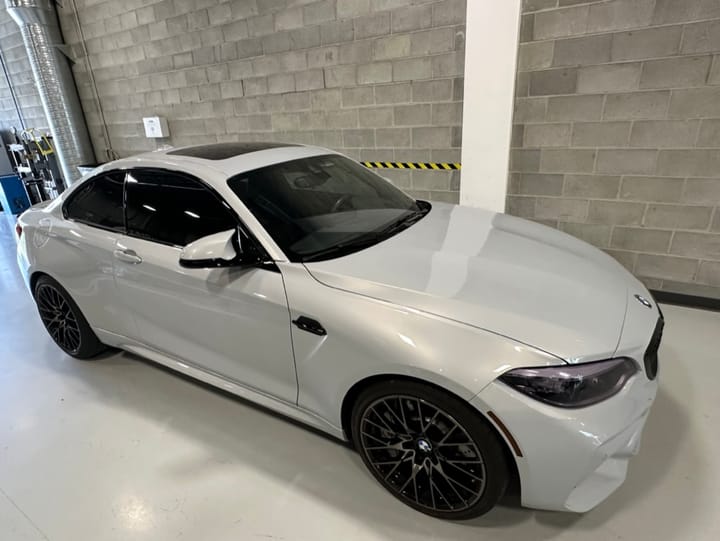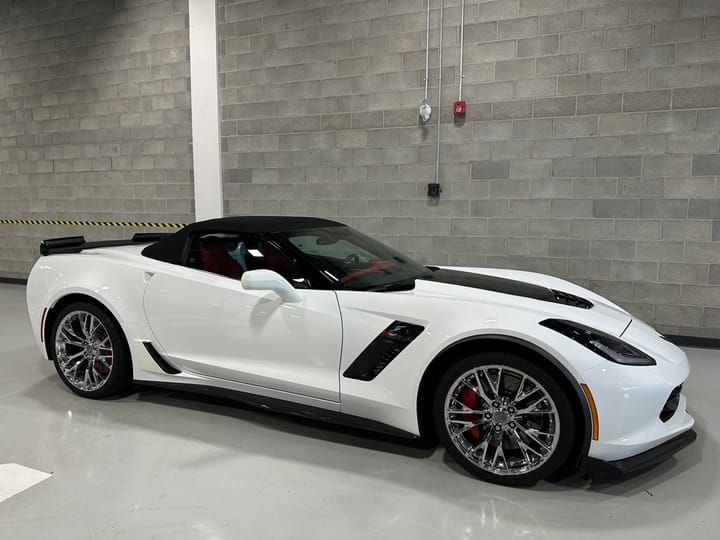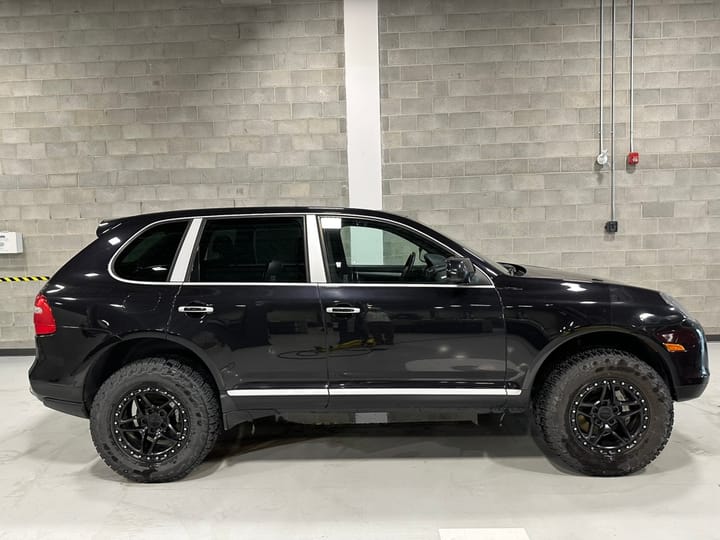Leasing Made Complicated
Automobile leasing is a funny business, and manages to confuse almost everybody. There are open and closed end leases, 'subvented' or discounted rates, and varying lease-end obligations. But it is probably the determination of the residual value which has the largest impact on the payment, and is the least understood. In this era of inflated used car values, just about every leased car will have equity in it from overpaid depreciation. If you have a leased vehicle, you want to capture this, and not just gift it to the leasing company or the dealer.
It think it helps to deconstruct a lease payment into simple math to understand where the payment comes from. Also, we need to get rid of some obsolete terminology from an industry stuck in the past.
The lease payment is made up of two things: depreciation and interest. The depreciation is the purchase price of the car less the residual value. This is adjusted by the down payment. The leasing terms are Capital Cost (purchase price) and Net Capital Cost (purchase price less down payment). If a car costs $72,000 and has a 50% residual ($36,000) over 3 years, the depreciation is $72,000 - $36,000 = $36,000. Divide this by the number of payments (36) and you get $1,000 every month that covers the depreciation of the vehicle. Your lease payment will be $1,000 per month plus the interest expense.
You pay interest on the outstanding balance of your lease. The first month of your $72,000 contract you will pay one twelfth of the annual rate of interest multiplied by $72,000. Each month you will pay principal and interest, no different from any other type of amortization. At the end of the lease you will pay interest only on the residual. So in this example we would pay interest on $72k in the first month and $36k on the last month. It just so happens that if we pick the mid-point between the starting and ending balance we can determine the average interest expense over the life of the lease and approximate the interest portion of the lease payment. This is the basis for the 'Money Factor' which - inexplicably - some lease companies insist on using (more on this later).
This is an approximate calculation that will come within a few dollars of the actual payment calculated using the much more complicated amortization formula. It is where the 'Money Factor' comes from. Leasing companies came up with a table of 'Money Factors' for the Finance Managers to use before we had the widespread use of financial calculators (1990)? Some leasing companies still use these tables, and should probably be told the world has moved on.
The money factor is nothing more than the interest rate divided by 2,400. The reason they came up with it was so somebody without a financial calculator or a computer could calculate a lease payment. It simplifies the above calculation by picking out the '.07', the '2' and the '12', leaving only the Cap Cost and Residual. So you add the Cap Cost to the Residual and multiply by the Money Factor to get the Interest portion of the payment. Then when the customer asks what the rate is, the Finance Manager tells the client it is .0029167, instead of 7%...
Needless to say, I think we can all assume that anybody who is in the business of selling cars has access to a financial calculator or computer, and .0029167 just doesn't roll off the tongue as well as 7%. The only reason I can think of to use a Money Factor is that you don't want anybody to know what the interest rate is... So, leasing professionals out there, can we please get rid of this?
That all said, I think using the full equation and breaking up the lease payment into depreciation and interest is beneficial. It breaks out your cost of borrowing nicely and shows the affect that the residual has on your monthly payment.
The Residual Value is meant to equal the wholesale value of the vehicle at the end of the term - the amount of money the leasing company would realize if the car was sold at auction. This is almost never accurate: the vehicle can be worth less than the residual or is most often the case today - substantially more. With the common 'closed end' lease, if the vehicle is worth less you have underpaid the depreciation and the leasing company will take a loss. If the vehicle is worth more, you have overpaid the depreciation and have equity in the lease which you should try to capture.
The determination of the Residual Value is something of a battle between the Sales and Financing arm of the manufacturer. The Sales people along with the dealers want the residual as high as possible so that they can advertise a low payment. The Financing people want to have the residual as low as possible so as to incur the least risk.
When they don't agree, the Sales division can take some money out of their marketing budget and buy down or 'subvent' the lease rate. This is where the low lease rates come from. The Leasing company still gets 7%, but the retail customer pays less with corporate or dealer marketing funds coming up with the difference.
In today's market, the cost of financing a car is around 5% and the cost of leasing a car 7%. The 2% spread is accounted for by the increased risk to the leasing company disposing of the car at the end of the lease term. If the rate is less than that, somebody else is helping to pay the bill. That is why dealers will tell you that you can have a cash discount or a low rate, but not both.
If the leasing company is extremely conservative with the residual value - it being so low that they couldn't possibly lose money if they had to dispose of it - there is not much point paying a 2% premium. The reason to lease is to give yourself protection against accelerated depreciation, and lock in the value of the car at the end of the term. If the residual is silly, then there is no benefit, save for the minute protection against diminished value caused by an accident.
A company that is desperate to increase market share can offer both a low interest rate and a high residual to advertise a low monthly payment. These programs can be good value for consumers, but often end in tears for the leasing companies that can take substantial end-of-term losses. When these residuals turn out to be overly optimistic, the manufacturers put pressure on the dealers to buy the lease returns and bail them out. When customers return the cars to the leasing company, they get nickel and dimed for every little mark on the car.
Companies that have no trouble selling a particular model don't have to offer incentives; cash or subvented rates. If they are not selling the cars on payment, there is little pressure to offer realistic residuals. This is a frustration for buyers who want the payment to roughly approximate the cost of ownership: they don't want to overpay for their use of a car and then fight for a refund.
Some manufacturers don't have the confidence in their vehicle's resale value to offer any leasing program at all - this isn't a good sign. They sell the cars on payments with the longest possible amortization and the greatest frequency, "$150 per week for 96 months". These are textbook cases of 'negative equity' waiting to happen.
Typical residual values are about 50% of a cars value after 3 years and 60,000km. Actual values can vary a lot.
When I sold Bentleys, the big Azure convertible listed for around $400,000. One year later it was worth $200,000 and at the end of year 3 it was only worth $150,000. I remember giving somebody a $75k discount on one, but it still wound up being extremely expensive to own. At the other end of the scale, the MSRP on a Porsche GT3 may be the lowest price it ever sells for.
Toyota has no trouble selling their Tacoma pick ups. Such is the confidence in Toyota reliability, a used Tacoma costs nearly the same as a new one. Toyota's 36 month lease offers a rate of 6.7% and a residual of $30,000 on a $45,000 MRSP. That residual shows well deserved confidence in their product.
If you are leasing a car I would dig out the residual value and compare it to what similar cars are being advertised for. If you do appear to have significant equity you can either sell the vehicle privately or trade it in. Your dealer should be happy to write you a cheque or transfer the equity into a new vehicle - if you ask.
Lawrence Romanosky, Calgary, Canada
Lromanosky@me.com, 403-607-8625



Comments ()